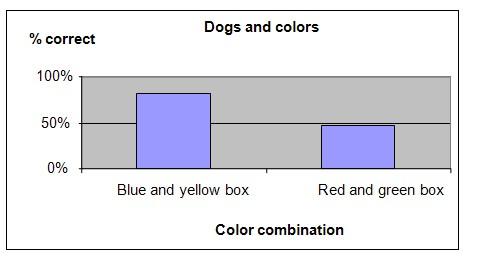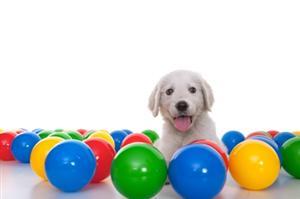| Complexity level: | 8 |
| Project cost ($): | 80 |
| Time required: | 14 days to prepare, 1 day for the science project experiment |
| Material availability: | Participation of 5 different breed of dogs required. |
| Safety concerns: | Be careful when handling unfamiliar dogs. Have a dog trainer or dog owner handle the dogs. |
Hypothesis
Overview
Scientific Terms
Materials
Procedure

Results
Conclusion
Also consider
References
Related videos
Hey there! Here are some awesome videos about this science project that we think you'll really like. They're not only super fun, but they'll also help you learn more about the science behind the project. So sit back, relax, and get ready to have some fun!!
Check out this student's science project to find out if dogs see color! I wonder if this experiment could be improved by training the dog for a longer time on the blue cup with treats. In the 2nd part of the experiment, the dog may have gone to the other colored cups because he didn't find treats in the blue cup!
Watch this video summarizing the colors dogs can see. What other experiments can you conduct to test these discoveries with your dog?


